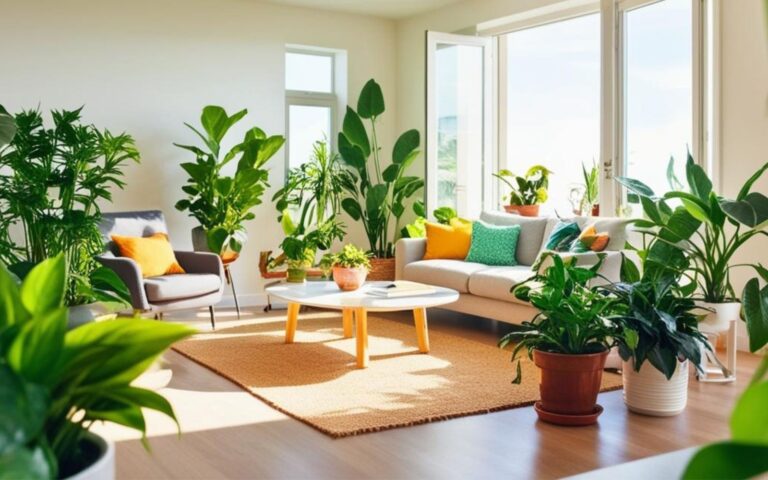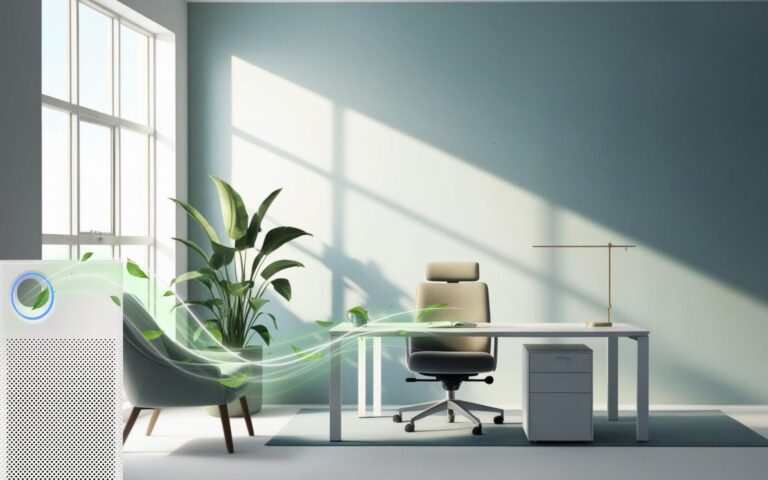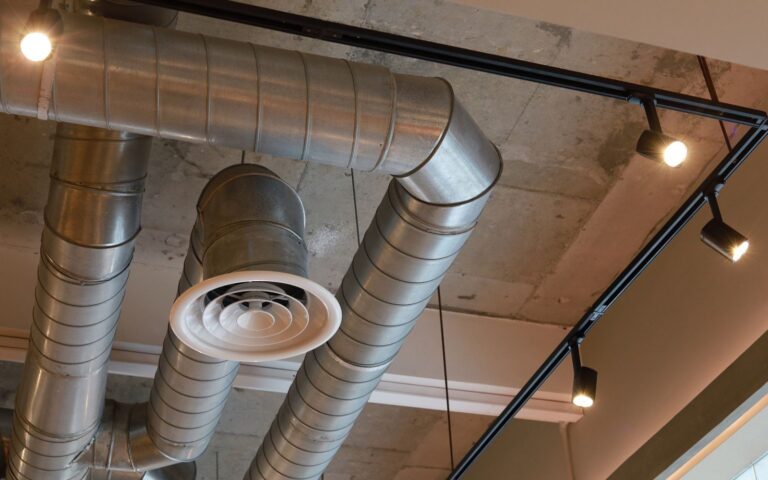How Indoor Plants Purify Air Quality: Benefits and Best Choices for Your Home
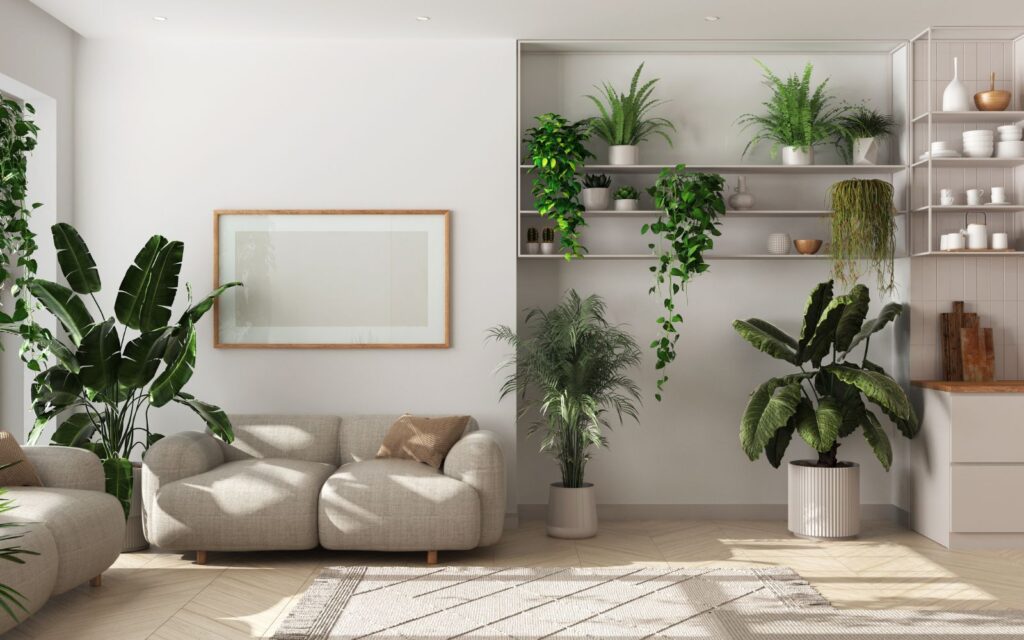
Indoor plants are more than just decorations. They’re natural air filters that enhance the indoor environment and air quality, making your home healthier and more comfortable.
Plants play a crucial role in creating a healthier living environment by absorbing harmful indoor air pollutants, releasing oxygen, and regulating indoor air humidity.
In this article, we’ll explore how indoor plants purify air quality, their benefits, and the best species to consider for air purification.
Key Takeaways
- How indoor plants purify air: They absorb toxins, release oxygen, and modulate indoor air humidity.
- Boost your well-being: Indoor plants improve air quality, reduce stress, and enhance immunity.
- Top air purification plants: Snake, spider, and peace lilies lead the pack.
- Easy air quality improvements: Place plants strategically to filter air and balance humidity.
The Importance of Indoor Air Quality
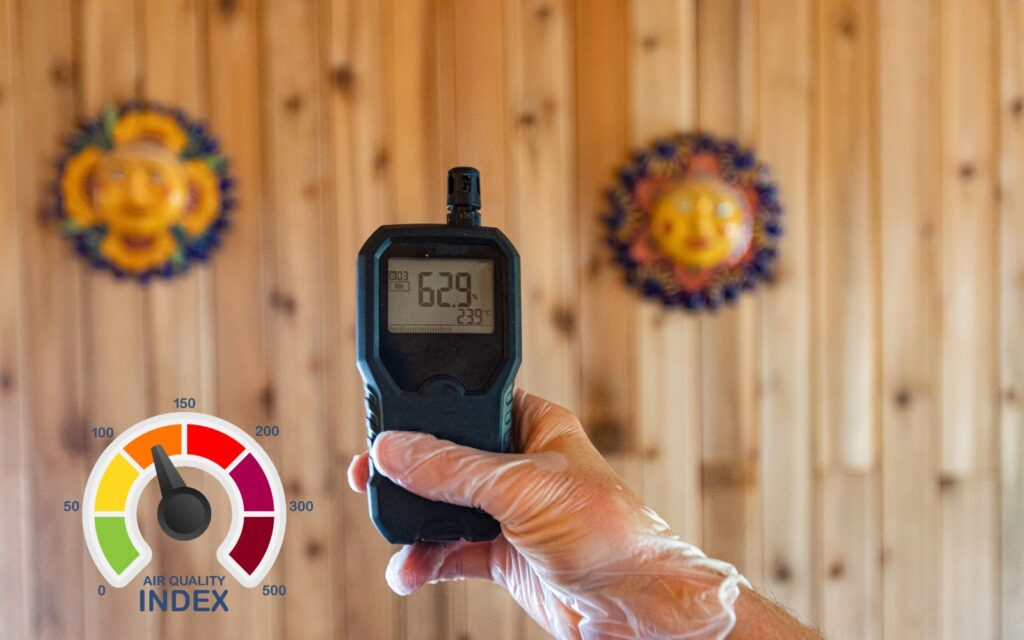
Indoor air quality is crucial to our daily lives as we spend a significant amount of time indoors. Poor indoor air quality can lead to various health problems, including respiratory issues, allergies, and cancer.
Indoor air pollutants, such as volatile organic compounds (VOCs), particulate matter, and carbon dioxide, can come from various sources, including building materials, furniture, and household products.
To improve indoor air quality, it is essential to identify and eliminate these sources of pollution.
One effective way to do this is by using indoor plants, which can absorb pollutants and produce oxygen, improving indoor air quality.
How Indoor Plants Purify Air Quality

Indoor air pollutants like formaldehyde, benzene, and carbon dioxide are typical in homes.
Indoor plants can help combat these harmful substances through various absorption and filtration mechanisms. Let’s break it down:
1. Absorbing Airborne Molecules
Plants absorb harmful volatile organic compounds (VOCs) through their leaves and roots.
Often found in cleaning supplies, furniture, and paints, VOCs can negatively impact the human respiratory system.
Indoor plants act as natural air filters, breaking these toxic pollutants into harmless byproducts.
2. Producing Negative Air Ions
Certain plants, such as spider plants, release negative air ions. These ions bind to indoor air pollutants, neutralizing their harmful effects.
Studies show that negative air ions can significantly decrease air microbiomes and limit indoor airborne transmission of diseases.
3. Regulating Indoor Air Humidity
Plants modulate indoor humidity by releasing water vapor through transpiration.
Balanced humidity levels improve human respiratory system function, prevent dry air, and reduce the spread of respiratory illnesses.
Maintaining optimal humidity levels in the indoor environment can also decrease the viability of airborne viruses, creating a less favorable environment for virus transmission.
4. Photosynthesis: Oxygen Production
Plants absorb carbon dioxide and release oxygen through photosynthesis, especially during the day.
This improves indoor air quality, particularly in poorly ventilated indoor environments.
While plants improve indoor air quality, frequent exchange with outdoor air is essential for effectively reducing indoor air pollutants.
Benefits of Indoor Air Purification With Plants

The benefits of indoor air purification go beyond just breathing cleaner air. Here’s how indoor plants impact your overall well-being:
1. Cleaner Indoor Air
Indoor air pollutants like benzene and formaldehyde can accumulate over time.
By implementing indoor plants, you create an efficient cleaning system that keeps indoor air fresh and safe.
2. Improved Indoor Air Quality for Human Health
Indoor air pollution can severely affect the human respiratory system. Plants like peace lilies and pothos actively absorb airborne pollutants, minimizing human exposure to harmful substances and reducing health risks.
3. Enhanced Immune System
Breathing clean indoor air has been linked to an enhanced immune system capable of fighting diseases.
Plants regulating relative humidity also help minimize the spread of airborne microorganisms, including influenza virus transmission.
4. Stress Reduction and Mental Well-being
Indoor plants purify the air and create a visually calming atmosphere. Studies have shown that indoor house plants reduce stress and improve focus, contributing to a healthier human environment.
5. Sustainable and Natural Air Filtration Methods
Unlike mobile HEPA filter systems or alternative air filtration systems, plants offer a natural and cost-effective way to improve indoor air quality without electricity or maintenance costs.
However, natural ventilation and the exchange with outdoor air remain crucial for maintaining optimal indoor air quality.
Best Air Purification Plants for Indoor Spaces

Choosing the right plants is essential for efficient indoor air cleaning. Here are some top indoor plant species for purifying the air:
1. Snake Plant (Sansevieria)
- Known for absorbing toxic pollutants like carbon dioxide and releasing oxygen even at night.
- Ideal for improving indoor air quality in bedrooms.
2. Spider Plants
- Excellent at absorbing airborne molecules like carbon monoxide.
- Child- and pet-friendly, making them a safe choice for families.
3. Peace Lily (Spathiphyllum)
- Filters out toxic pollutants like benzene, trichloroethylene, and formaldehyde.
- Thrives in low-light indoor environments.
4. Pothos (Epipremnum Aureum)
- Hardy and easy to maintain.
- Perfect for indoor spaces lacking plants due to its high tolerance for low light and humidity.
5. Areca Palm
- A foliage plant enhances humidity and filters the air effectively.
- Best suited for large indoor spaces.
Low-Maintenance Air-Purifying Plants
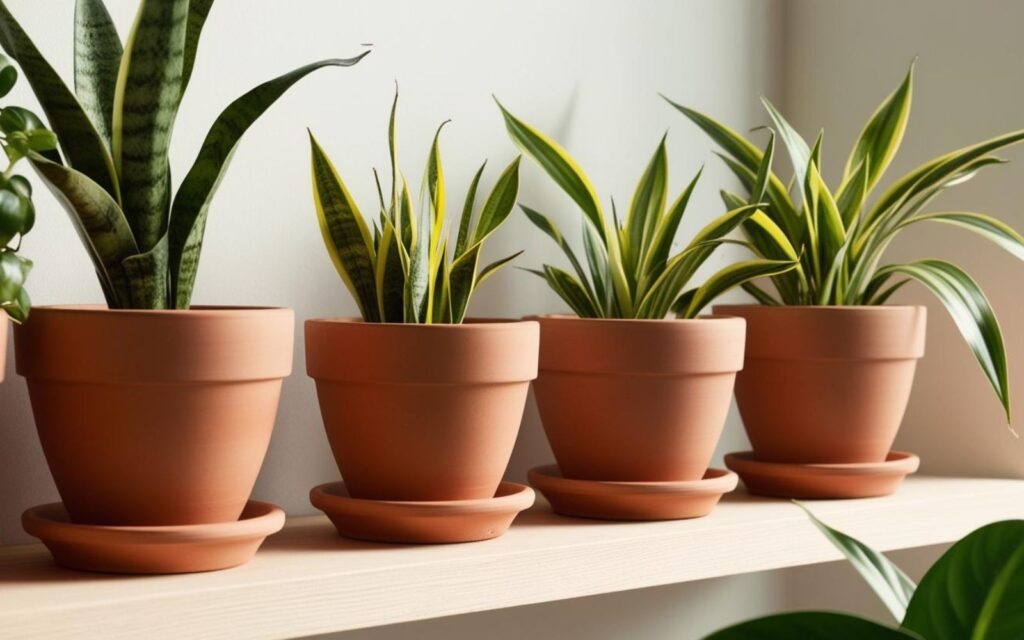
Not all air-purifying plants are created equal. Some require more maintenance than others, which can challenge busy people.
However, several low-maintenance air-purifying plants, such as the snake plant, spider plant, and ZZ plant, can thrive indoors with minimal care.
These plants are perfect for people who forget to water their plants or don’t have much time to care for them.
They can tolerate low-light conditions and infrequent watering, making them ideal for indoor spaces.
Plants That Remove Mold Spores and Bacteria
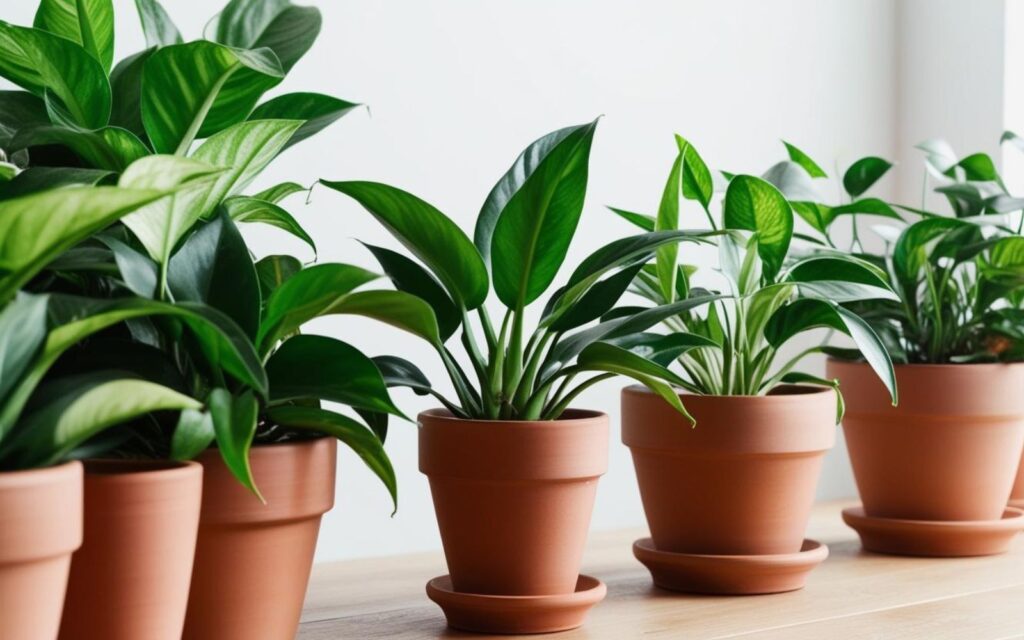
Mold spores and bacteria can be a significant problem in indoor environments, especially in areas with high humidity.
However, several plants, including the peace lily, bamboo palm, and English ivy, can help remove these microorganisms from the air.
These plants have been shown to have antimicrobial properties, which can help eliminate mold spores and bacteria from the air.
Incorporating these plants into your indoor space creates a healthier environment for you and your family.
How Many Plants Do You Need to Purify a Room?
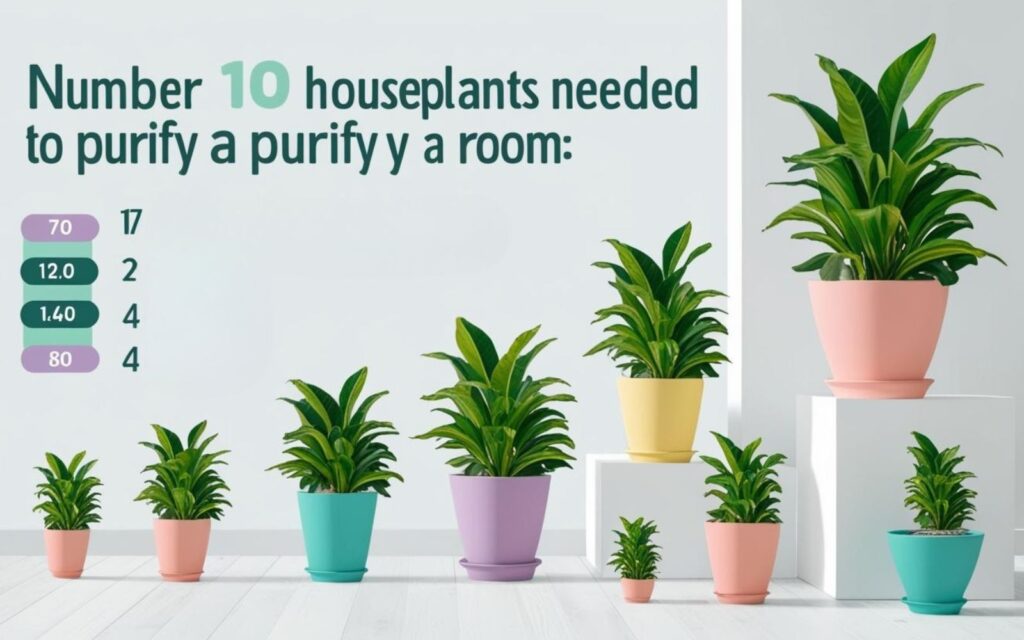
The number of plants needed to purify a room depends on several factors, including the size of the room, the type of plants, and the level of air pollution.
According to NASA, two to three plants in 8 to 10-inch pots are needed for every 100 square feet of space.
However, other experts suggest adding ten plants per square foot for optimal air purification.
While this may seem like a lot of plants, it’s essential to remember that indoor plants can also improve a room’s aesthetic and provide other benefits, such as stress reduction and improved mental health.
Pet-Friendly and Kid-Safe Plants

Not all indoor plants are safe for pets and children. Some can be toxic if ingested, while others can cause allergic reactions.
However, several pet-friendly and kid-safe plants can be used for air purification. These plants include the spider plant, bamboo palm, and areca palm.
They are non-toxic and can thrive in indoor environments with minimal care.
Incorporating these plants into your indoor space creates a healthier and safer environment for pets and children.
How to Improve Indoor Air Quality Using Plants
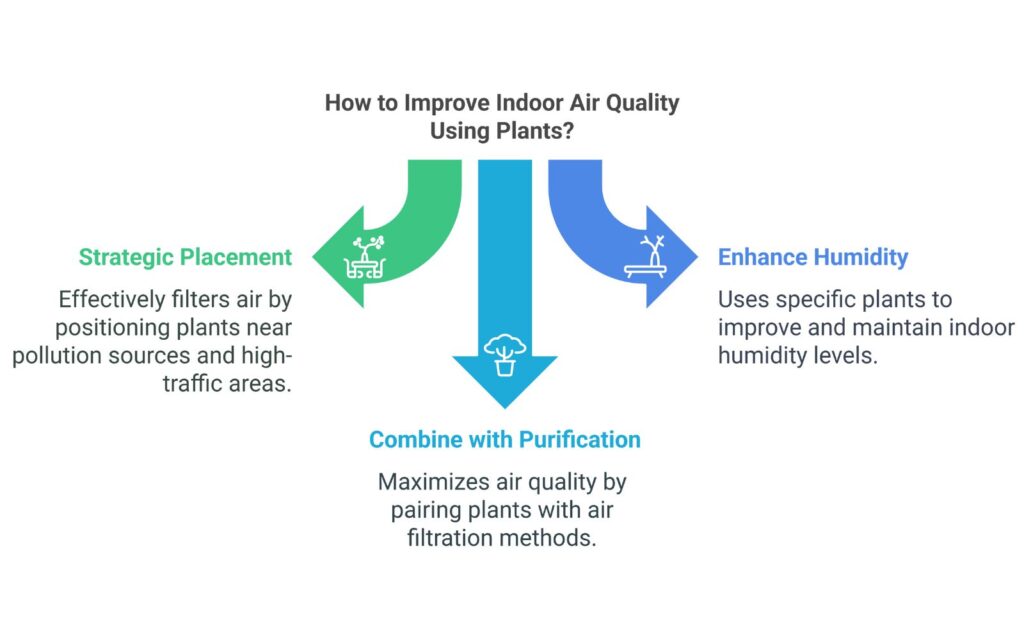
1. Strategic Placement for Indoor Air Cleaning
- Plants should be placed near sources of pollution, such as electronics and furniture, to filter air effectively.
- Plants should be used in high-traffic areas, such as kitchens and living rooms, to reduce indoor air pollutants.
2. Enhancing Indoor Air Humidity
- Use plants like peace lilies and areca palms to improve indoor air humidity.
- These plants also help control air humidity, maintaining a balance that is good for skin and respiratory health.
3. Combining Plants With Air Purification Methods
- Pair plants with air filtration techniques for maximum effectiveness. In hospital settings, negative pressure air flow is used to reduce the airborne presence of viruses, and combining this with indoor plants can further enhance air purification.
- Use artificial intelligence technology or controlled indoor computerized experiments to optimize air quality if you’re tech-savvy.
Caring for Air Purification Plants

Healthy plants are key to effective air purification. Follow these tips:
- Avoid overwatering: Too much water can harm plants. Let the soil dry before watering.
- Provide adequate light: Different indoor plant species have varying light requirements. Learn what works for each.
- Regularly clean leaves: Dust accumulation can reduce a plant’s ability to purify the air.
- Monitor indoor air humidity: Plants that regulate relative humidity thrive in balanced conditions.
Summary
Indoor plants are a natural and sustainable solution for enhancing indoor air quality. They create a healthier human environment by absorbing harmful toxins, releasing oxygen, and regulating indoor air humidity.
Whether you are new to indoor plants or a seasoned enthusiast, adding air-purification plants like snake plants, spider plants, and peace lilies can transform your indoor spaces into cleaner, greener havens.
Frequently Asked Questions
How Do Indoor Plants Improve Air Quality?
Indoor plants purify the air by absorbing toxic pollutants, releasing oxygen, and improving indoor air humidity.
Can Plants Help With Indoor Airborne Transmission of Diseases?
Some plants produce negative air ions that can limit indoor airborne transmission by neutralizing harmful particles.
Which Plants Are Best for Balancing Indoor Air Humidity?
Areca palms and peace lilies improve indoor air humidity and prevent dryness.
How Do Plants Affect the Human Respiratory System?
By filtering air and improving humidity, plants reduce stress on the respiratory system, improving overall respiratory health.
Can Indoor Plants Replace Air Filtration Systems?
While plants are effective natural air filters, the best results are obtained by combining them with air filtration techniques like HEPA systems.
